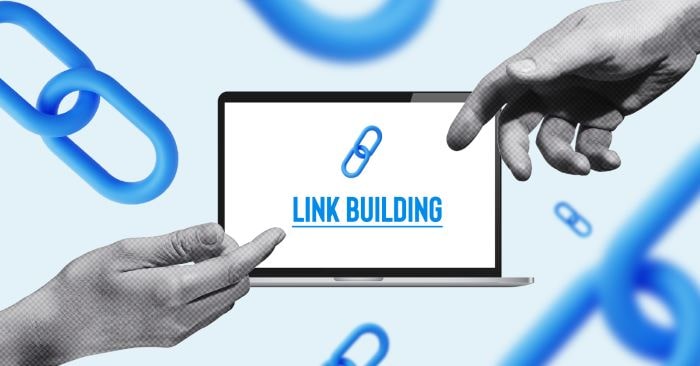Integrating SEO and Content Marketing For Better Optimization Strategy
Truelogic Takeaways:
SEO content marketing is no longer a buzzword, it’s the foundation for digital visibility, authority, and long-term growth. As the distinction between SEO and content marketing fades, the most successful brands prioritize comprehensive strategies that blend technical optimization and compelling storytelling.
To help businesses thrive in this new landscape, this quick guide explores essential concepts, actionable tactics, and the strategies that define effective SEO and content marketing not only in 2025, but in the upcoming years. Whether the goal is to increase reach, drive traffic, or boost brand authority, integrating these efforts is now non-negotiable.
Here, you will discover how SEO and content marketing work hand in hand, and clear how to build a strategy that consistently performs.
SEO Content Marketing: The New Digital Standard
SEO and content marketing are no longer independent; their integration is now essential for digital visibility. Gartner predicts that by 2026, traditional search volume will drop by 25%. Brands not adapting their strategies for AI-powered answers risk losing up to half their organic traffic. What’s more, over 70% of users already rely on AI-driven answers instead of traditional search results, underscoring why forward-thinking brands must embrace a holistic SEO content marketing strategy and generative engine optimization (GEO) to maintain and grow their online presence.
The Evolution of Content Marketing and SEO
Tactics that once worked, like keyword stuffing and superficial content, are now obsolete. Search engines reward brands for high-quality, expert-driven content that aligns with search intent. Today, Google’s AI Overviews and generative answers have increased the importance of originality, subject-matter expertise, and concise responses that address specific user questions, not just surface-level keyword matching. Studies show there’s less overlap between top 10 SERP links and AI citation, creating new opportunities for niche and smaller brands to earn visibility through fresh, authoritative answers.
Key Insight: Adapting SEO and content marketing together is essential; strategies built on user intent, expertise, and original information now deliver higher rankings, visibility, and engagement than legacy optimization tactics.
What are the Core Elements of an SEO Content Marketing Strategy?
- Clear Business and Content Goals
Define what you want to achieve (e.g., traffic, lead generation, sales, authority) and set measurable KPIs that tie content outcomes to business results. - Audience Research and Personas
Build detailed profiles of your target audience, including pain points, information needs, and preferred channels. Map content to each stage of the buyer journey. - Strategic Keyword and Topic Research
Use robust keyword tools and competitor analysis to discover high-impact, relevant topics. Focus on both quick-win and long-tail opportunities that match user intent. - Content Pillars and Topic Clusters
Organize your site around core themes. Build clusters of interconnected content to boost authority and relevance. - Content Creation and Optimization
Develop high-quality, original assets (blogs, videos, infographics) that solve user problems and answer specific questions. Ensure each piece is optimized for SEO (metadata, internal links, schema markup, etc.). - Distribution and Promotion
Share content on relevant channels (social media, email, forums) and actively promote it to boost visibility and reach. - Performance Measurement and Analytics
Regularly track traffic, rankings, engagement, and conversions. Use insights to refine your strategy and double down on what works.
Crafting (and Optimizing) High-Value Content
Today, effective SEO and content marketing is all about developing resources people truly find useful, delivering value, relevance, and engagement alongside robust SEO and a seamless internal linking strategy.
- Produce diverse content formats, create in-depth blogs, interactive tools, and visual media designed to answer user questions and solve real problems.
- Make every resource easy to scan and navigate, with bold headings and bite-sized sections that guide both users and search engines to key points.
- Consistently weave strategic internal links throughout your site, connecting related topics, guides, and product pages so visitors can easily explore further and search crawlers can understand the structure.
- Optimize each asset for both users and algorithms, using clean technical setup (fast load, mobile-ready) and clear metadata.
- Refresh and expand older content, continually updating facts and insights to keep your pages relevant and authoritative.
- Track engagement and rankings for every piece, then refine approaches and amplify what works with data-backed decisions.
CMS Checklist for Streamlined SEO Content Marketing
A well-integrated content management system (CMS) is the backbone of any successful SEO content marketing strategy. By streamlining everything from content creation and optimization to publishing and analytics, a CMS empowers teams to collaborate, save time, and adapt quickly as both marketing and search technologies evolve. When SEO and content work together inside your CMS, the result is better visibility, stronger engagement, and measurable growth, with less hassle and fewer bottlenecks.
Ready to put these best practices into action?
Here’s your CMS SEO Content Marketing Checklist. Use it to build, track, and refine your strategy, step by step, every time you launch new content.
Measuring & Refining Your SEO and Content Marketing Strategy
Successfully integrating SEO and content marketing means continuous improvement, not just launching and forgetting. Use this step to ensure your work adapts and improves over time:
- Define Success Early
Set clear KPIs, such as organic traffic, engagement rate, conversion rate, page speed, and keyword rankings.
- Monitor with Analytics
Tools Use Google Analytics, Search Console, and specialized SEO dashboards to track traffic, dwell time, CTR, engagement depth, and technical site health.
- Look Beyond Traffic
Analyze conversion paths, measure how content influences sales or leads, and check which topics are driving the best results.
- Prioritize Engagement Metrics
Track average engagement time, scroll depth, and key events triggered on your pages. These reveal content resonance as much as rankings.
- Audit & Refresh Content Regularly
Every 3 months, audit your existing posts using analytics and recommendations. Update meta descriptions, optimize for user intent, and refresh outdated information for improved results.
- Adapt to Algorithm Updates
Stay alert to Google core updates and changes in search behavior; use insights from algorithm trends to adapt your workflow. - Refine Based on Data
Use data-driven insights: tweak content formats, internal linking, headlines, or calls-to-action based on performance, not assumptions.
The Payoff of Integrated SEO & Content
Mastering the integration of SEO and content marketing isn’t just a trend, it’s the game-changer for brands ready to achieve long-term authority, visibility, and business growth. Today, technical SEO paired with authentic, audience-focused content builds a foundation that’s resilient against evolving search engines and changing user behavior. By setting clear goals, understanding audiences, focusing on meaningful topics, and tracking every step, brands can do more than just attract clicks, they can earn engagement, trust, and loyalty.
Most importantly, success comes from continuously refining your strategy: updating your content, adapting to new challenges, and making every resource more valuable than the last. When your SEO and content efforts work seamlessly together, you unlock measurable impact, and position your brand for lasting success.
Ready to elevate your brand’s content marketing strategy and results? Let’s Talk!








